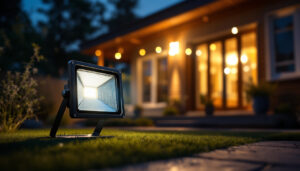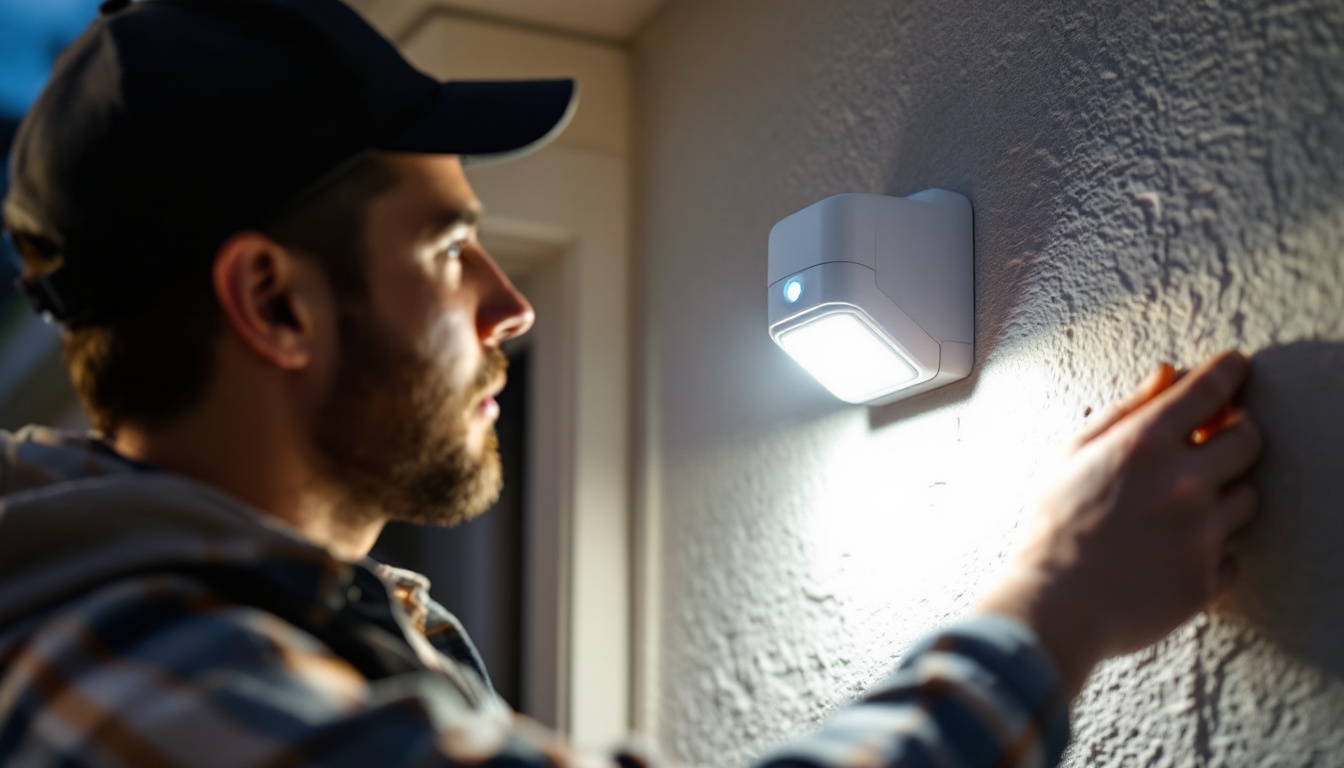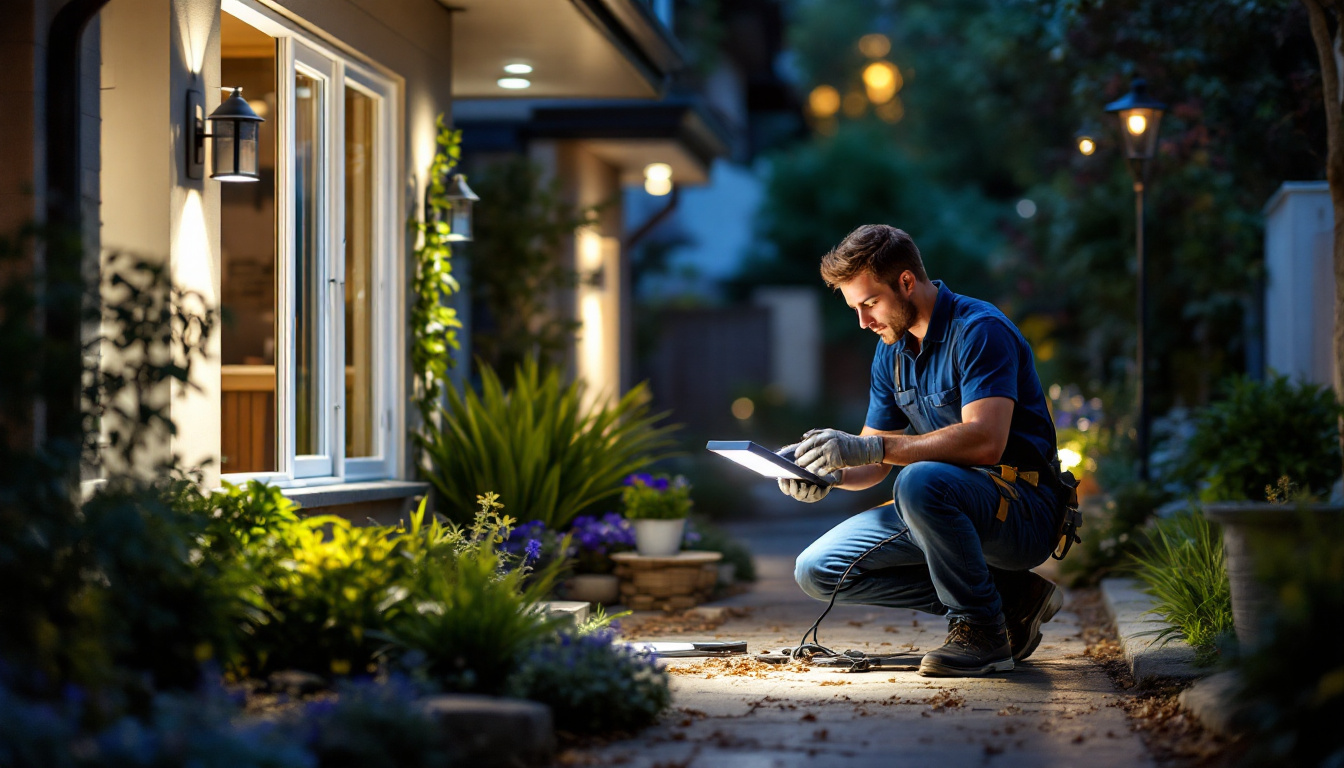

In the ever-evolving landscape of lighting technology, motion sensor sensors have emerged as a pivotal component for both residential and commercial applications. As lighting contractors navigate this dynamic environment, understanding the importance of motion sensor technology can significantly enhance their service offerings and client satisfaction. This article delves into the top reasons why lighting contractors should prioritize the integration of motion sensor sensors into their projects.
One of the most compelling reasons for lighting contractors to focus on motion sensor sensors is their ability to enhance energy efficiency. As energy costs continue to rise, clients are increasingly seeking solutions that minimize consumption without sacrificing performance. The integration of smart technology into lighting systems allows for a more dynamic approach to energy management, enabling clients to monitor and control their energy usage in real-time.
Motion sensors automatically adjust lighting based on occupancy, ensuring that lights are only on when needed. This not only reduces energy waste but also extends the lifespan of lighting fixtures, leading to lower maintenance costs for clients. By incorporating motion sensors, contractors can provide a value-added service that aligns with the growing demand for sustainable practices. Furthermore, the implementation of these systems can be tailored to various environments, from residential homes to large commercial spaces, making them versatile solutions for energy efficiency.
In addition to energy savings, motion sensor technology contributes to reducing the overall carbon footprint of a property. By minimizing unnecessary energy use, these sensors play a crucial role in promoting environmental sustainability. Many clients are now prioritizing eco-friendly solutions, and by offering motion sensor installations, contractors can position themselves as leaders in this green initiative. The positive impact on the environment is further amplified when these technologies are combined with renewable energy sources, such as solar panels, creating a synergistic effect that maximizes sustainability.
Moreover, the adoption of motion sensors can lead to significant behavioral changes among occupants. When individuals become aware that their actions directly influence energy consumption, they are more likely to adopt energy-saving habits, such as turning off lights when leaving a room or being mindful of their usage patterns. This cultural shift not only benefits the environment but also fosters a community ethos centered around sustainability and responsible resource management.
With increasing regulations aimed at reducing energy consumption, contractors must stay informed about local and national energy codes. Many jurisdictions now require the installation of motion sensors in specific applications, such as commercial buildings and public spaces. By focusing on motion sensor technology, lighting contractors can ensure compliance with these regulations, avoiding potential fines and enhancing their reputation in the industry. Staying ahead of these regulatory changes not only protects businesses but also positions contractors as knowledgeable experts in energy efficiency solutions.
Additionally, the proactive implementation of motion sensors can serve as a competitive advantage in the marketplace. As more clients seek to align their projects with sustainability goals and regulatory requirements, contractors who specialize in energy-efficient solutions will likely find themselves in high demand. This foresight can lead to increased project opportunities and partnerships with environmentally conscious organizations, further solidifying their standing in the industry while contributing to a greener future.
Another critical aspect of motion sensor sensors is their role in improving safety and security. In both residential and commercial settings, well-lit areas deter criminal activity and enhance the overall safety of occupants.
Motion sensors can be strategically placed to illuminate pathways, parking lots, and entryways, ensuring that these areas are well-lit when movement is detected. This not only provides peace of mind for clients but also enhances the usability of outdoor spaces during nighttime hours. For contractors, offering motion sensor solutions can be a key selling point, particularly for clients concerned about safety.
Lighting that activates in response to movement serves as a powerful deterrent against potential intruders. The sudden illumination of an area can startle would-be criminals, making them think twice about their intentions. By highlighting this benefit, contractors can effectively communicate the added security that motion sensors provide, appealing to clients who prioritize safety in their properties.
Moreover, the integration of motion sensors with security cameras can further enhance protection. When motion is detected, not only does the lighting activate, but the cameras can also begin recording, providing valuable evidence in the event of an incident. This dual approach not only enhances the immediate security of the premises but also serves as a long-term deterrent, as potential intruders may be aware that they are being monitored. This synergy between lighting and surveillance creates a comprehensive security system that can significantly reduce the risk of crime.
Motion sensors also enhance accessibility for individuals with disabilities or mobility challenges. By ensuring that lighting activates automatically upon approach, these sensors create a more inclusive environment. Contractors who prioritize accessibility in their installations can broaden their client base and demonstrate a commitment to meeting diverse needs.
In addition to improving safety for those with mobility issues, motion sensors can also benefit caregivers and family members who may be assisting individuals with disabilities. For instance, in homes where elderly residents may require assistance during the night, motion-activated lights can illuminate hallways and bathrooms, reducing the risk of falls and accidents. This thoughtful integration of technology not only fosters independence for individuals with disabilities but also provides reassurance to their families, knowing that safety measures are in place to support their loved ones.
In addition to energy efficiency and safety, motion sensor sensors significantly boost convenience and comfort for users. Imagine entering a room and having the lights automatically turn on, or walking down a hallway without fumbling for a switch. This level of convenience is increasingly expected in modern homes and workplaces.
For lighting contractors, emphasizing the comfort that motion sensors provide can help differentiate their services from competitors. Clients appreciate solutions that simplify their daily routines and enhance their overall experience in a space.
As smart home technology continues to gain traction, motion sensors are often integral components of these systems. Many homeowners are looking for ways to integrate their lighting with smart devices, allowing for seamless control through mobile apps or voice commands. By focusing on motion sensors, contractors can tap into this growing market, offering solutions that align with the latest technological trends.
Modern motion sensors come equipped with customizable settings, allowing users to adjust sensitivity, timing, and lighting levels based on their preferences. This flexibility enhances user satisfaction and ensures that the lighting system meets the specific needs of each client. Contractors who understand and can demonstrate these customizable features are more likely to win projects and foster long-term relationships with clients.
Investing in motion sensor technology can lead to substantial cost savings for clients over time. While the initial installation may require a higher upfront investment compared to traditional lighting solutions, the long-term benefits often outweigh these costs.
By reducing energy consumption and maintenance needs, motion sensors can lead to lower utility bills and fewer replacements of fixtures. Contractors who can present a clear cost-benefit analysis to clients will find it easier to justify the investment in motion sensor technology.
Clients are increasingly looking for ways to reduce their operational costs, and motion sensors provide a tangible solution. By highlighting the potential for long-term savings, contractors can position themselves as trusted advisors who prioritize their clients’ financial well-being.
Incorporating motion sensor technology can also enhance the overall value of a property. Prospective buyers often seek homes and commercial spaces that feature modern, energy-efficient technologies. By equipping properties with motion sensors, contractors can help clients increase their property value and appeal to a broader market.
The lighting industry is becoming increasingly competitive, and contractors must find ways to stand out. By focusing on motion sensor technology, contractors can differentiate themselves from competitors who may not be as knowledgeable or equipped to offer these solutions.
As clients become more educated about the benefits of motion sensors, they are likely to seek out contractors who can provide these services. By positioning themselves as experts in motion sensor technology, contractors can attract new clients and retain existing ones.
Contractors who embrace new technologies, such as motion sensors, can build a reputation for innovation and forward-thinking. This reputation not only attracts clients but also fosters relationships with other professionals in the industry, leading to potential collaborations and referrals.
The lighting industry is continually evolving, with new trends emerging regularly. By staying informed about motion sensor technology and its applications, contractors can adapt to these trends and ensure their services remain relevant. This adaptability is crucial for long-term success in a competitive market.
In summary, motion sensor sensors represent a significant opportunity for lighting contractors to enhance their service offerings and meet the evolving needs of clients. From improving energy efficiency and safety to boosting convenience and comfort, the benefits of motion sensors are numerous and compelling.
By prioritizing motion sensor technology, contractors can position themselves as leaders in the industry, build a reputation for innovation, and ultimately drive business growth. As the demand for smart, energy-efficient lighting solutions continues to rise, focusing on motion sensors will not only benefit clients but also ensure the long-term success of lighting contractors in a competitive marketplace.
Ready to lead the charge in energy-efficient lighting with motion sensor technology? LumenWholesale is here to support your business with spec-grade lighting products at unbeatable wholesale prices. Say goodbye to inflated markups and hello to a vast selection of reliable, high-performance lighting that meets the highest industry standards. Plus, with free shipping on bulk orders, you can stock up on premium lighting without the hassle of hidden fees. Elevate your lighting projects and give your clients the best value by choosing Wholesale Lighting at the Best Value with LumenWholesale today.

Discover the ultimate guide to outdoor wall mounted solar lanterns, exploring their benefits, installation tips, and design options to enhance your home’s exterior lighting sustainably and stylishly..

Discover essential insights into outdoor linear light fixtures with our comprehensive guide tailored for lighting contractors.

Discover essential tips and strategies for lighting contractors to prevent common pitfalls when installing outdoor light boxes.

Discover why LED light bulbs are revolutionizing the lighting industry and what every lighting contractor needs to know to stay ahead.
Get notified when NEW deals are released.
Optimize your budget with wholesale discounts.
Only top-quality, specification-grade lighting products.
No additional costs at checkout - what you see is what you pay.
We understand the unique needs of contractors.